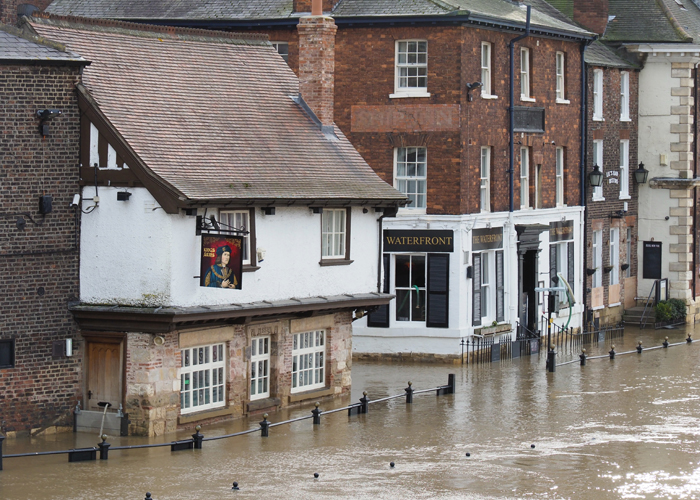THE UK has a history of serious flooding, and this record is only set to worsen. Flash flooding will become more regular from increased rainfall as part of climate change, with millions of homes at risk. Winter flooding is well known in the UK, as we tend to have a lot of rain in the colder months. However, we’re also at risk of summer flooding, as rainfall tends to be more intense in the warmer seasons when it does occur, quickly overwhelming existing drainage.
But why should you care about flooding, seasonal or otherwise? With £333 million of estimated loss due to flood issues in six months alone, there are very real physical and financial consequences for unlucky properties. With some homes, several feet deep in water, any furnishings in your rental property are at risk. Some fixtures and fittings, such as electrical appliances, are likely to be irrecoverable. In a flash flood, damage to older buildings’ infrastructure may even be irreparable.
Types of flooding
River: When heavy rain causes rivers to flow over their banks, it results in river flooding. With an often-gradual effect, there is some time to launch an emergency response.
Flash: Caused by rainfall that is so heavy in such a short period that any drainage systems cannot cope. As this happens quickly, this type of flooding is especially dangerous and hard to respond to.
Groundwater: The below-ground water level increases causing waterlogged ground which bubbles up and can’t drain.
Surface: When water sits on the ground and spreads due to intense rainfall in a short period that can’t drain away.
How to protect your property
Depending on where properties in your portfolio are located, you may face risks from multiple types of flooding. With this set to become more of an issue, what can you do to protect your investment?
Be informed: Check the long-term flood risk for your area. It can’t give you a detailed analysis of your individual property, but it can offer a general risk level and information on how to approach the threat level indicated. Put a plan together in advance so you’d know what to do in the event a flood occurred.
Get insurance: If you let property, getting comprehensive landlord insurance is by far the best way for you to protect your investment. If the worst happens and a flood hit, you may be liable for emergency accommodation for your tenants and repairs to your property. Without cover, this kind of disaster could devastate your business.
Carry out a survey: Get a flood mitigation survey to give you an idea of how badly your property could be damaged in various forms of flooding. This isn’t a guarantee of anything, but it may help you understand how you can mitigate certain effects in advance. Likewise, if the threat level is listed as low, this doesn’t mean your property is immune to flood dangers.
Improve drainage: Make sure your property has adequate surrounding drainage by levelling out the soft-to-hard ground surface ratios to ensure natural draining opportunities.









